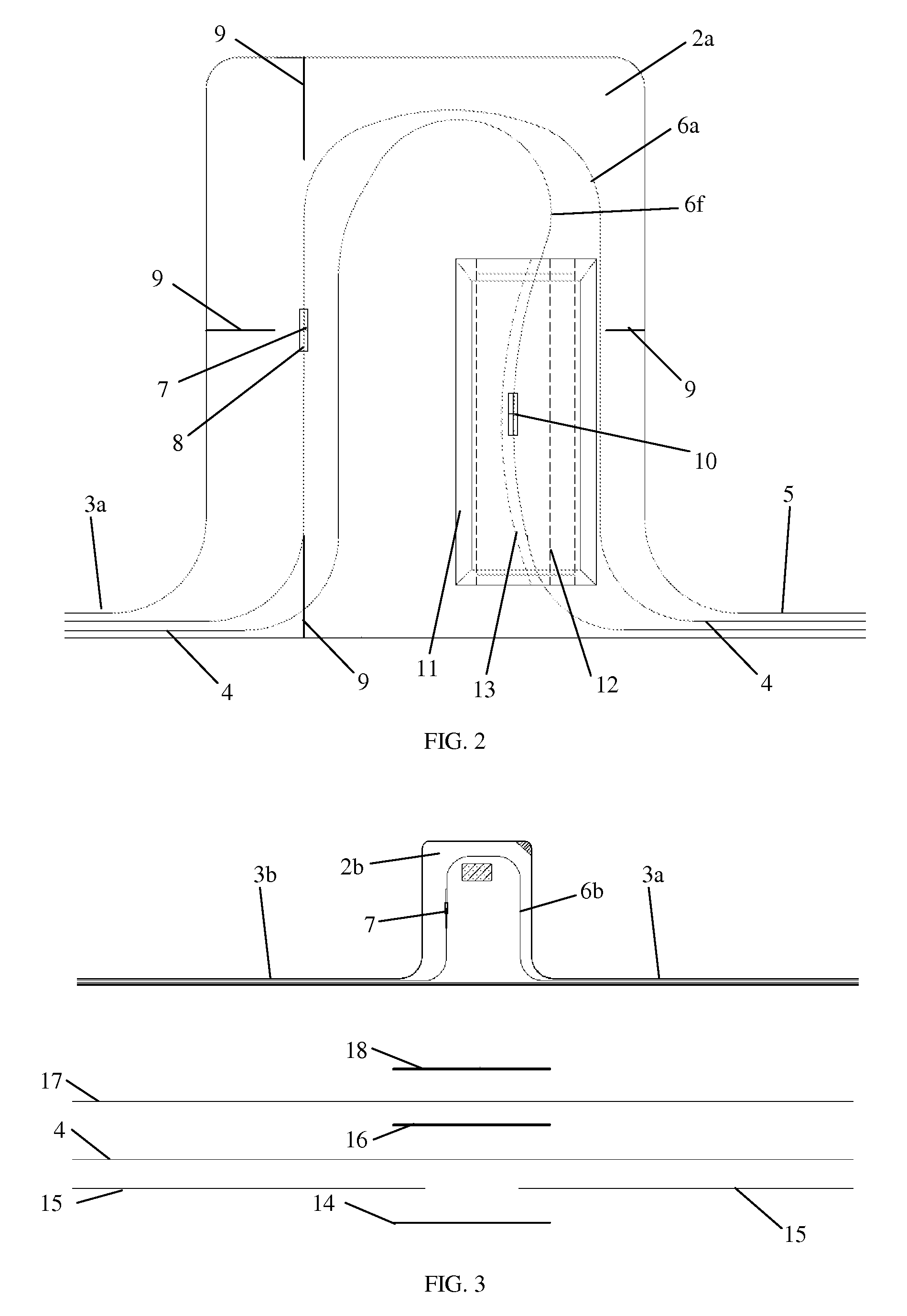Sensor array
- Summary
- Abstract
- Description
- Claims
- Application Information
AI Technical Summary
Benefits of technology
Problems solved by technology
Method used
Image
Examples
Embodiment Construction
[0024]FIG. 1 shows an optical fibre strain sensor array 1 according to an embodiment of the invention. The array comprises four sensor support panels 2a-2d connected by three connecting members 3a-3c. A 250 micron unsleeved optical fibre 4 runs from a terminal portion 5 of the array to the first sensor support panel 2a, where it forms a first curve (or loop) 6a on the first sensor support panel 2a. The optical fibre 4 continues from the first sensor support panel 2a along the first connecting member 3a to the second sensor support panel 2b, where the optical fibre 4 forms a second curve 6b on the second sensor support panel 2b. Similarly, the optical fibre 4 continues from the second sensor support panel 2b along the second connecting member 3b to the third sensor support panel 2c, where the optical fibre 4 forms a third curve 6c on the third sensor support panel 2c. Finally, the optical fibre 4 continues from the third sensor support panel 2c along the third connecting member 3c to...
PUM
 Login to View More
Login to View More Abstract
Description
Claims
Application Information
 Login to View More
Login to View More - R&D
- Intellectual Property
- Life Sciences
- Materials
- Tech Scout
- Unparalleled Data Quality
- Higher Quality Content
- 60% Fewer Hallucinations
Browse by: Latest US Patents, China's latest patents, Technical Efficacy Thesaurus, Application Domain, Technology Topic, Popular Technical Reports.
© 2025 PatSnap. All rights reserved.Legal|Privacy policy|Modern Slavery Act Transparency Statement|Sitemap|About US| Contact US: help@patsnap.com



